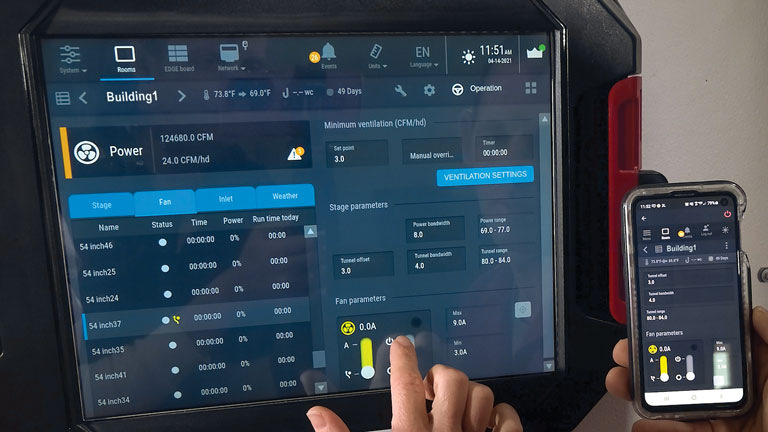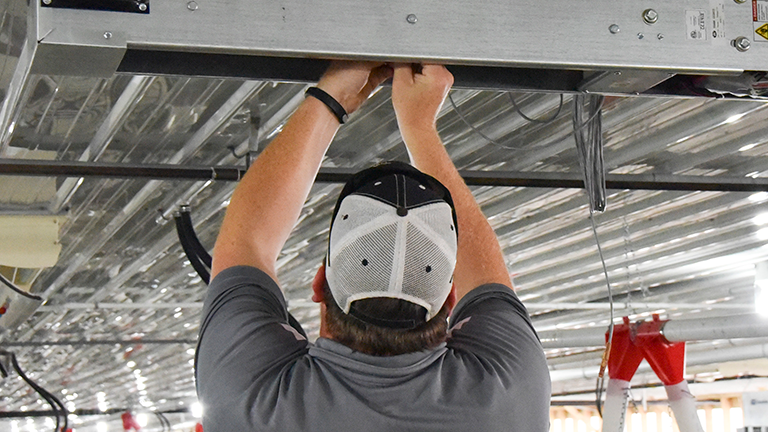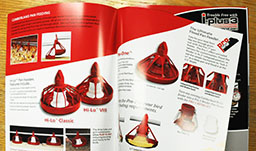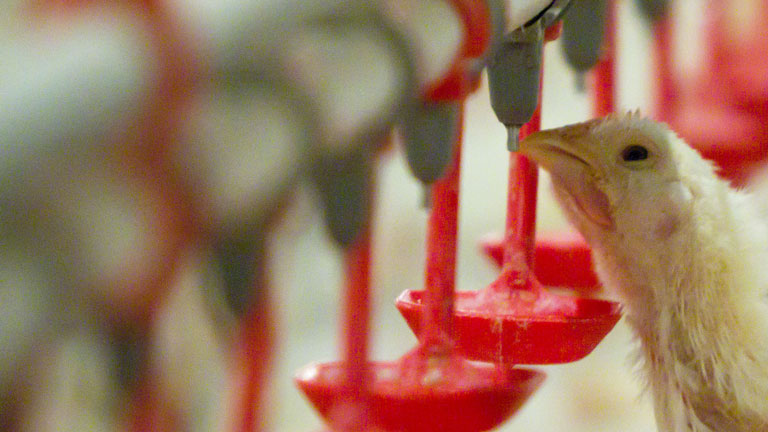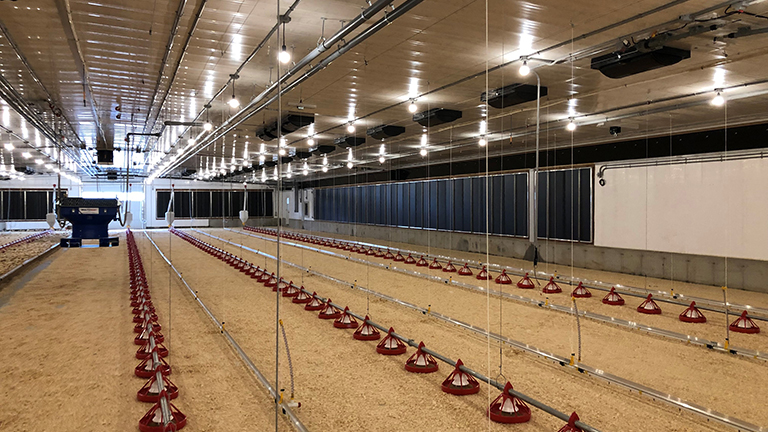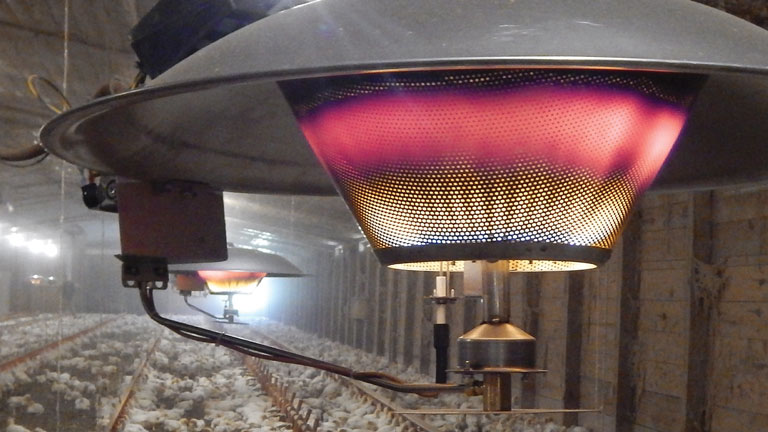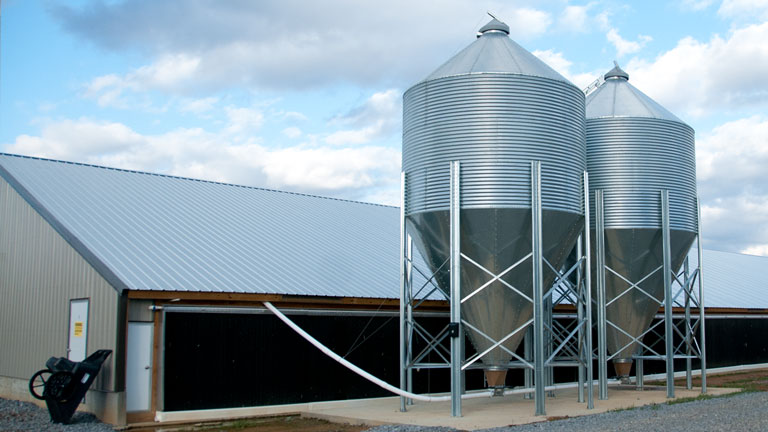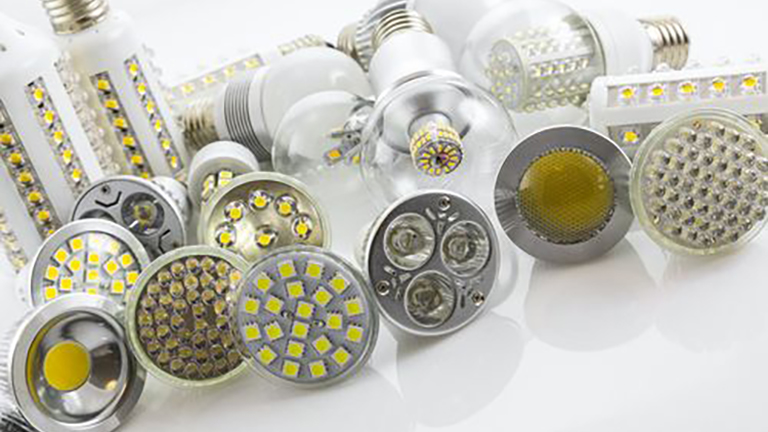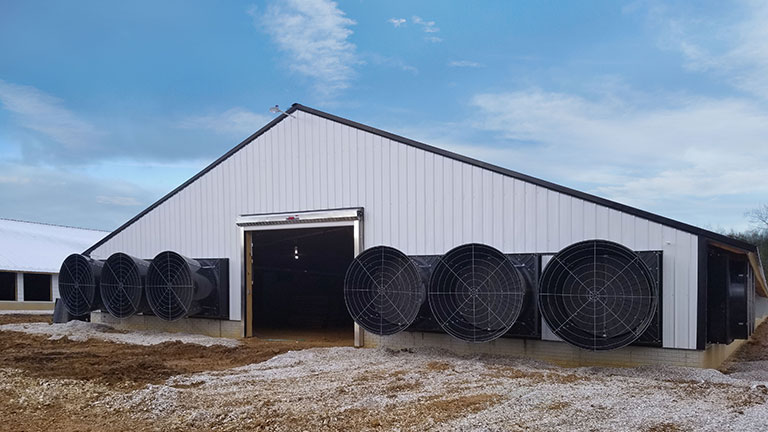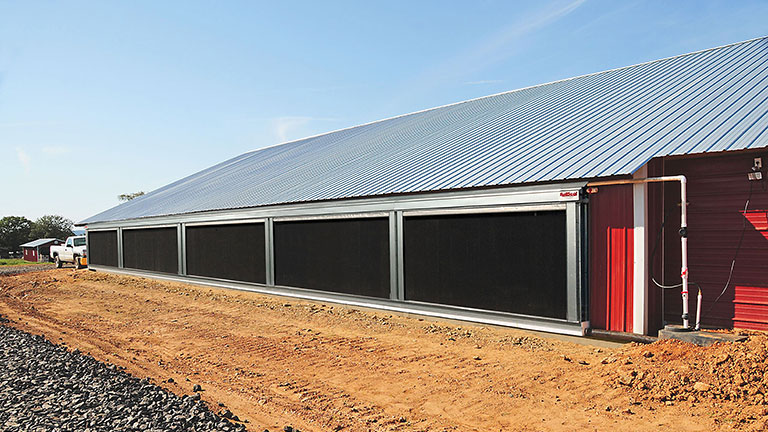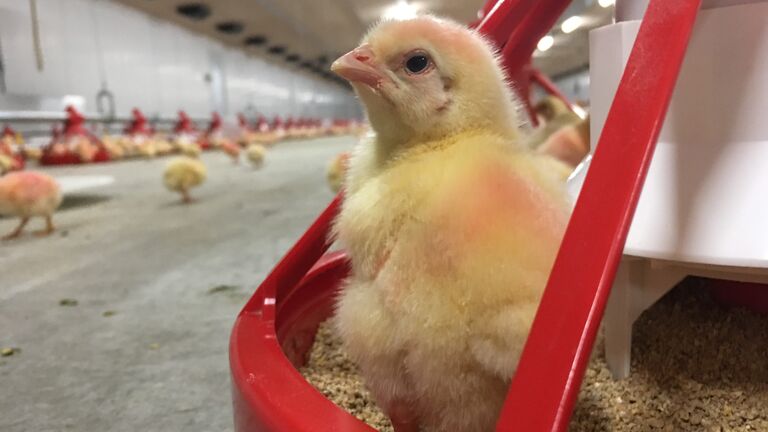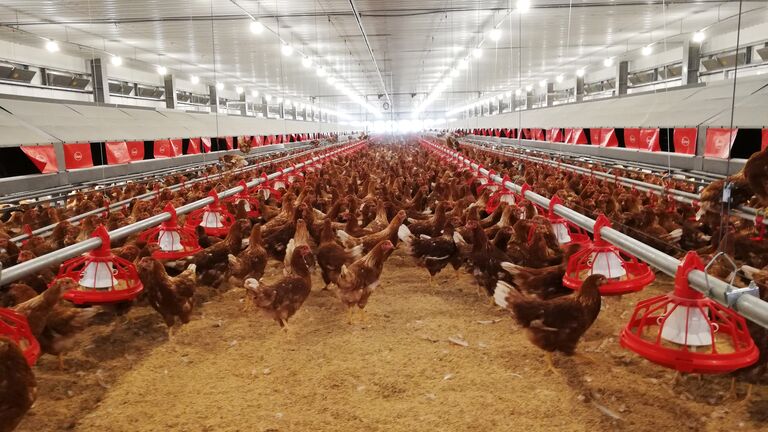Proper ventilation is well recognized as one of the most important aspects of poultry production in promoting bird health. A main contributor to high bird stress and low bird weight is an overheated or poorly ventilated poultry barn.
A very effective type of ventilation system for cooling, known as tunnel ventilation, has seen increased adoption by Canadian poultry producers in recent years because of its positive effect on air quality, especially during hot, humid weather.
In a typical ventilation system, such as cross ventilation, fans are located on one side of the barn and inlets on the other, which can create dead zones because of low air movement. In wider barns, there might be fans and inlets on both sides, but in both cases, air is cross ventilated. Or, in some cases, cross-ventilation systems have ceiling inlets, with fans on the sidewall. Ridge ventilation or chimney ventilation can also have inlets in the sidewalls or have ceiling inlets to let the fresh air in.
In contrast, a tunnel ventilation system brings in fresh air through tunnel inlet doors at one end of the barn and exhausts it at the other end. The system acts like a wind tunnel, creating high-speed air movement that helps cool the birds while also removing dust and harmful gases, such as ammonia, from their environment.
The cooling effect can be further enhanced with the use of evaporative cooling pads. As air is pulled through the evaporative cooling pads with the tunnel fans, water evaporates from the pads and cools the air going into the barn. More Canadian poultry producers have been installing tunnel ventilation, either in new or retrofitted barns, in regions that have experienced high temperatures and humidity during recent summers.
When the weather is extremely hot and some traditional systems are challenged with heat stress and possibly the loss of birds due to excessive heat, a properly designed tunnel ventilation system gives peace of mind to producers who have experienced challenges with their previous system. Not stressing about the heat is a huge asset to a properly designed tunnel ventilation system. How do you put a price on or measure the value of peace of mind?
In many barns tunnel systems are used in conjunction with conventional systems to transition from cool to warm weather. Variable speed fans can be used to control the rate of air movement inside the barn, based on environmental conditions inside and outside the barn.
All of these systems will draw the air from the sidewall or ceiling inlets until the tunnel system starts to run. And then, for true tunnel ventilation, the cross-ventilation fans will turn off, and the sidewall and ceiling inlets will close. The air will then come in one end and exhaust out the other.
Bird age and weather guidelines
A tunnel system should not be used with young birds, since prior to feathering they are more sensitive to the wind cooling effect. It is not required and would be stressful to these animals.
It is recommended that the cross-flow ventilation system or sidewall/ceiling inlet system be sized to supply at least 40% of the summer ventilation required. This supplies adequate ventilation during the cooler weather and also provides the younger, more sensitive birds ideal air quality without creating drafts prior to going to tunnel. If the cross-flow ventilation system is not adequate, it can create challenges with the ventilation system transitioning prematurely from cross to tunnel or potentially creating drafts when not yet desired.
Tunnel ventilation is not recommended when ambient air temperature is below 15 degrees Celsius. However, tunnel ventilation should be introduced prior to your animals being exposed to heat stress, not after they are already stressed. This is where it is important to automate the system since the controller is there to monitor the conditions of the barn 24/7 where you might not be there at the right time to make the transition.
Typically, the tunnel ventilation system is automated and factors in the bird’s age and temperature conditions. Where evaporative cooling is used with the tunnel system, the barn controller should also look at the humidity levels and activate the ventilation system accordingly.
Design considerations
Barn design factors also need to be taken into consideration when installing tunnel ventilation.
Key factors, especially in new buildings, include ensuring that the correct air speed is maintained, that air inlets are properly designed and maintained, and that there are no obstacles restricting air movement.
Also, make sure that fresh air gets through the building efficiently, without lingering. I remember years ago when it was suggested that the air speed for poultry in a tunnel should be 250 feet per minute. Tunnel systems were being designed with that air speed, but at that time there were very few barns longer than 150 to 200 feet. Then barns got longer and were still in some cases designed for 250 feet-per-minute air speeds. In this era is where the tunnel ventilation got a bad name in the industry because barns got longer and air speed was not increased. Systems were not designed properly. Today there are systems designed with 600 feet-per-minute air speeds or more. It is extremely important to design a proper system for your specific application as not all barns are created equal.
In some cases, offices, utility rooms or overhead doors have been built on the end of a barn and create some challenges regarding where to install the tunnel inlets or fans around these existing obstacles in a retrofit. But typically, if there is a will, there is a way.
Layer poultry barns can present challenges, even for a tunnel system. Unlike the open environment of a broiler operation, conventional stacked layer cages can diminish the rate of air movement through the barn. However, combining tunnel and conventional ventilation can help promote sufficient air movement through the cage aisles, while also picking up and moving air from inside the cages.
When dealing with wide open areas as you would typically see in broiler barns, it is extremely important to keep bird density balanced throughout the barn. Birds will migrate or move within the barn and can end up with higher densities in some areas than others. This potentially causes more heat stress and also makes it more difficult for a bird to get to the feeders and drinkers in the higher density (more populated) areas. Putting in some sort of migration fence or barrier in multiple places down through the barn can be very beneficial to keep bird density balanced. It is important that these fences or barriers do not obstruct the air flow to the birds.
Make sure that you design a tunnel system that you can seal up tight when tunnel ventilation is not in use for the colder months and also during brooding. Well-insulated tunnel doors and fan covers are very important, and in some cases, another layer of protection is added on the exterior of the building to block winds and keep the cold air out.
Better employee environment
Raising healthier, more productive birds is not the only advantage of a tunnel ventilation system. Farm managers and other barn employees also benefit. A comfortable, optimal environment for the birds will also be appreciated by the employees.
For additional information about tunnel ventilation systems, contact your Cumberland dealer.

